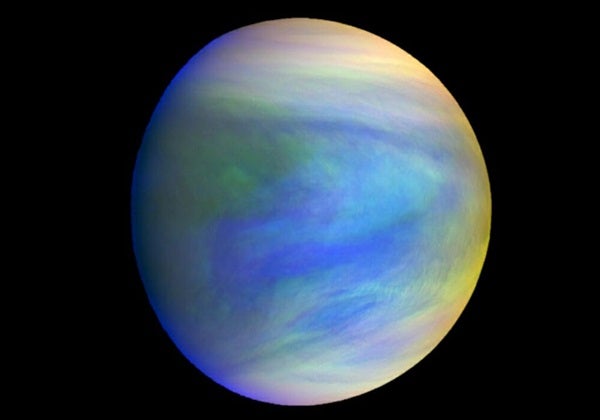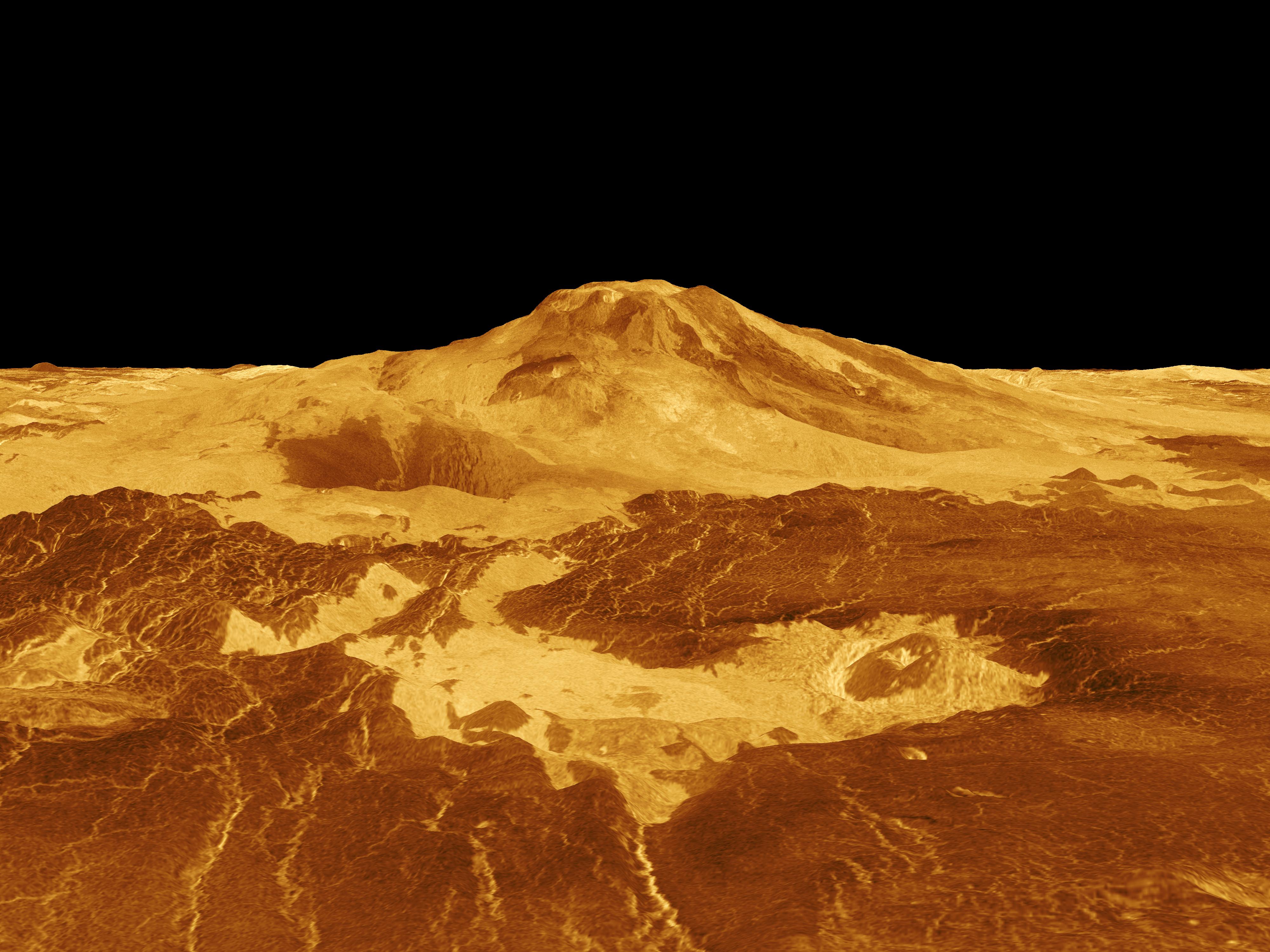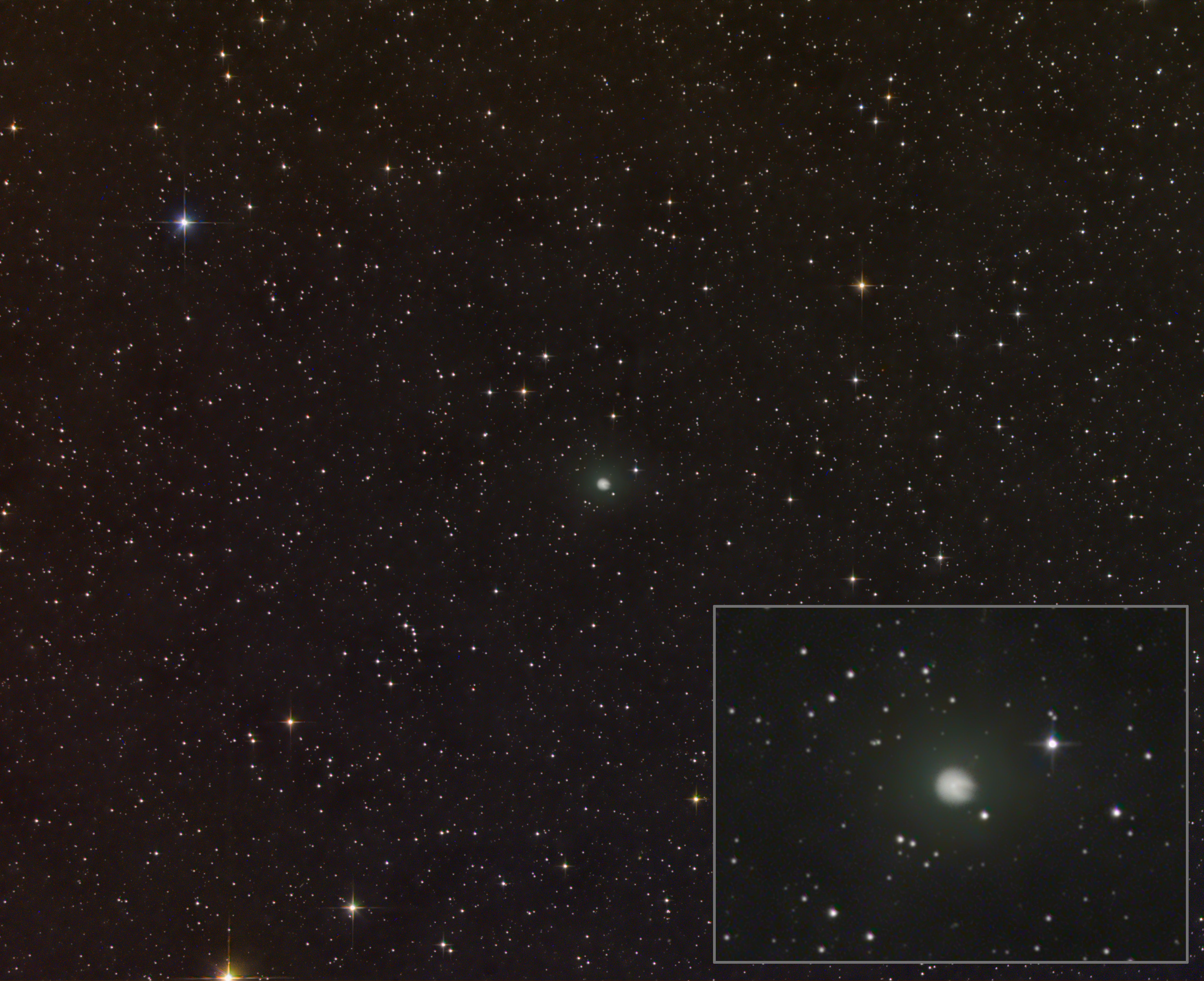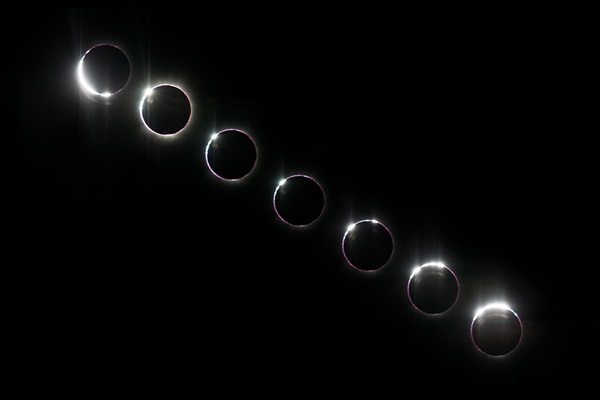On Earth, it’s easy to measure how long a day lasts. You simply pick a feature and track how long it takes for the Sun to return to the same position. Venus isn’t so simple. On Venus, a day lasts about 243 Earth-days. That’s longer than it takes the planet to complete an orbit around the Sun. So, a Venusian year actually spans just 225 Earth-days. The clouds make things even more challenging. They cover the surface and make it difficult to locate features.
Still, thanks to radar and spacecraft like NASA’s Magellan mission, which spent four years visiting Venus in the early 1990s, astronomers thought they had a handle on the length of a Venus day.
Now, researchers have combined almost 30 years of Earth-based observations of Venus to calculate an average rotation rate for the planet. The new average is slower than the average calculated by Magellan over a significantly shorter observation period of 487 days.
“Venus Express only saw that, yes, there was a difference, but there was fairly large uncertainty,” said study author and planetary scientist Bruce Campbell of the Smithsonian Institution in Washington, D.C. “We’ve brought that uncertainty down to a much finer level.”
The new results suggest that, over the course of 29 years, from 1988 to 2017, the average rotation of Venus was 243 days 30.5 minutes. That contrasts with Magellan’s average of 243 days 26.6 minutes.
“Ideally, you’d like to be able to measure things precisely year to year,” Campbell said. “Of major interest is how [those measurements] affect the long-term prediction of where a point on the surface is going to be,” he said. In other words, if you want to drop a robotic explorer in a region of the planet, you need to know how quickly that point is spinning.
Both Magellan and Venus Express watched the planet in detail for only a few brief years. The new measurements, which were published in the journal Icarus, take a step back to look at the spin over decades using the Arecibo Observatory in Puerto Rico and the Green Bank Observatory in West Virginia. While they don’t nail down how the planet’s spin changes from year to year, they provide a long-term average that can be useful for visiting spacecraft, one that fits both spacecraft measurements.
“If, 20 years out, we want to land on a certain place on Venus, I want to be sure my prediction is as solid as possible,” Campbell said. “I wouldn’t want to predict 20 years out then find out that the landing site is 5, 10, 15 kilometers away.”
Venus’ changing days
Long before spacecraft visited Venus, Earth-based telescopes were already trying to unveil its mysteries. In the 1960s, scientists used radar to determine that the planet spins backward compared to its orbit, which astronomers call retrograde rotation. Over the next 20 years, astronomers kept tracking Venus’ features in an effort to pin down the length of a day.
So, when Magellan arrived at Venus, its measurement of the planet’s day was already almost 5 minutes longer than the radar measurements. Nearly 20 years later, Venus Express set the day back 7 minutes, closer to the original calculations made by Earth-based instruments.
So what’s changing the planet’s rotation rate? Previous studies have shown that the heavy atmosphere, far thicker than Earth’s, can affect the planet’s spin. Gravitational tugs from Earth and the Sun may also play a role in changing the length of the day. That means any given day on Venus (which, again, lasts 243 Earth days) might be slightly longer or shorter than the one before, depending on the weather.
Venus won’t stop spinning
These changes aren’t necessarily permanent. While the new research reveals a different average day length from previous measurements, Campbell and his colleagues caution that their findings don’t mean the planet will one day stop spinning. Overall, the spin of Venus is determined by a balance between the Sun’s tidal pull on the atmosphere, as well as on the solid planet itself.
“We do not know if Venus’ rotation is slowing down or speeding up,” says Jean-Luc Margot, a planetary scientist at UCLA who was part of the new findings. “In fact, Venus’ spin rate may very well be speeding up at this time.”
Part of the problem with sorting out the planet’s rotation comes from lack of precision.
“For Venus, we don’t have highly precise measurements,” said Nils Mueller, a researcher at the German Aerospace Center who led the 2012 research.
Because spacecraft have landed on their surfaces, Mars and the moon have much tighter rotational measurements. Campbell would like to see that sort of precision used on Venus. In the 1970s, Apollo astronauts left behind mirrors on the lunar surface that let researchers shoot a laser beam from Earth to the moon and back. Martian landers have had radio signals that transmit their position back to Earth. Both allow precision measurements of rotation. “We don’t have either of those for Venus,” Campbell said.
That may change in the near future.
“There’s a lot of excitement these days to go back to Venus,” Campbell said. NASA is exploring a proposed mission called VERITAS, or Venus Emissivity, Radio Science, InSAR, Topography, and Spectroscopy, which would create a high-resolution map of the planet. The European Space Agency also has a mission proposal called EnVision. Like VERITAS, EnVision would perform high-resolution radar mapping.
“Those would both give you significant improvement in image resolution over Magellan,” Campbell said. Neither mission has been funded yet.
[Editor’s note: This article has been updated to correct errors, including an incorrect description of Venus’ rotation and Jean-Luc Margot’s affiliation with the new study.]











